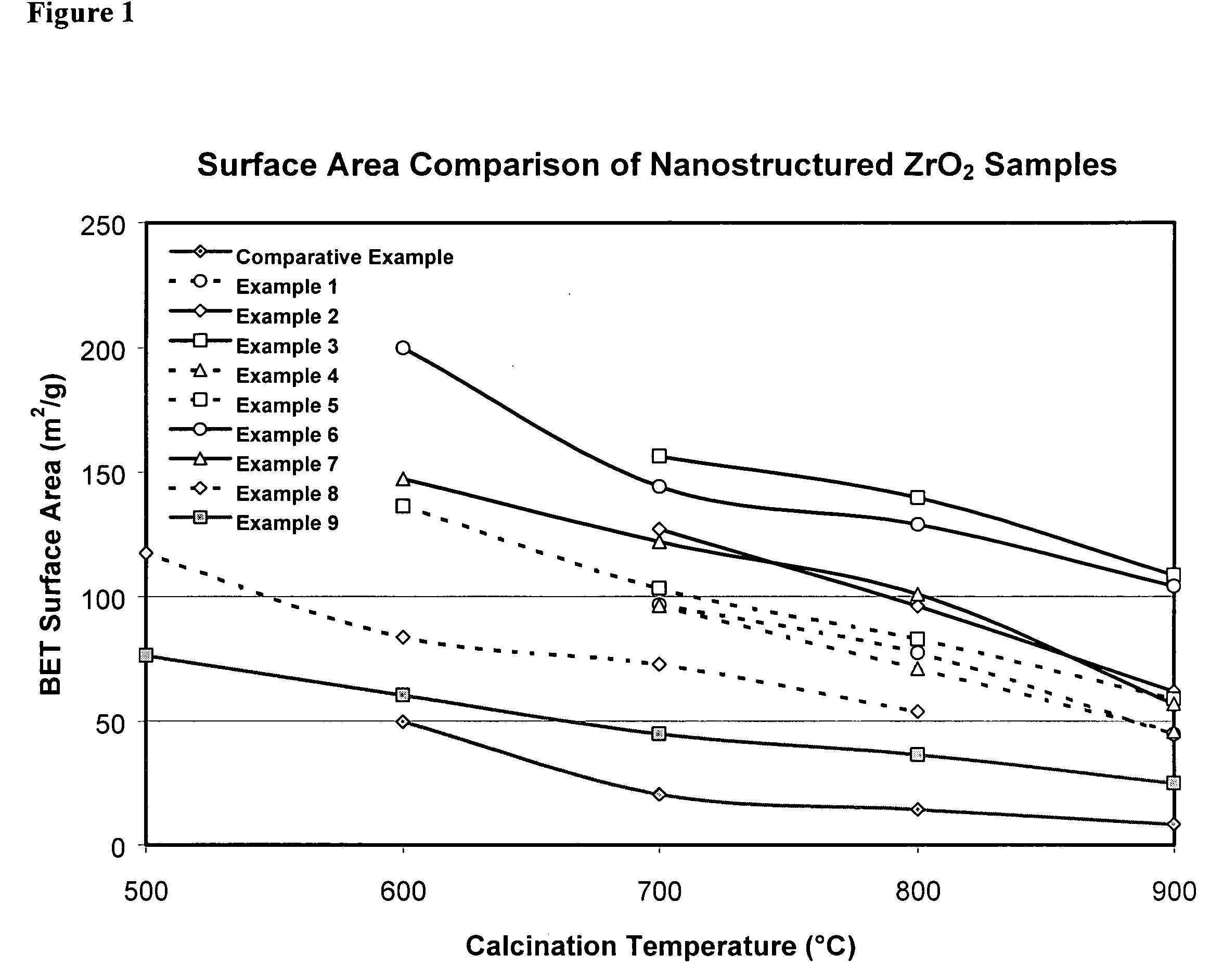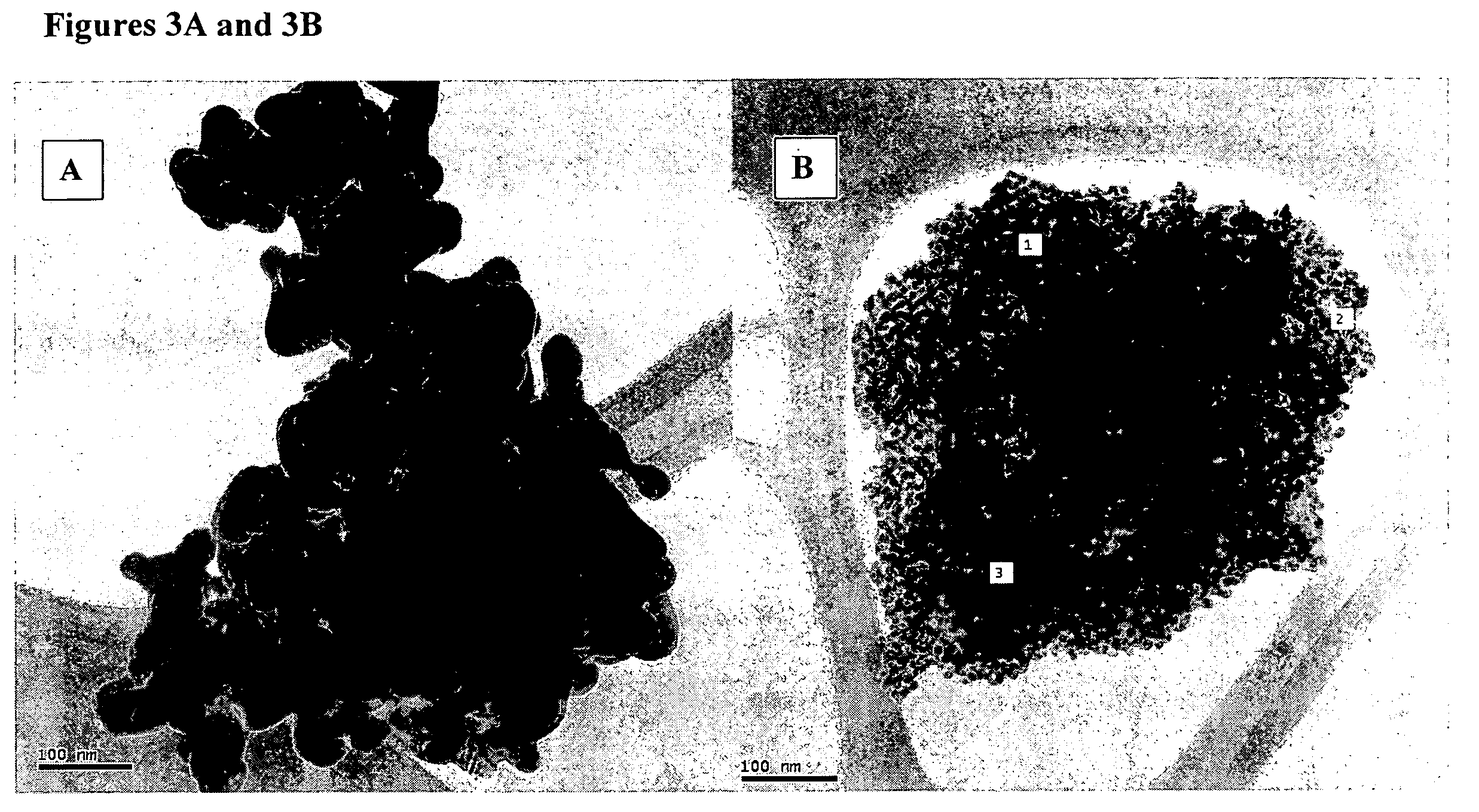Nano-structured particles with high thermal stability
a technology of nanostructured particles and thermal stability, applied in the field of nanostructured particles, can solve the problems of inability to produce particles with sufficiently high surface area to mass ratio and sufficiently high thermal stability, render particles less than optimally efficient during high temperature treatment, and achieve high specific surface area and high thermal stability.
- Summary
- Abstract
- Description
- Claims
- Application Information
AI Technical Summary
Benefits of technology
Problems solved by technology
Method used
Image
Examples
example 1
[0073] 1000 ml of 0.8 mol / l zirconium oxychloride solution prepared by dissolving ZrOCl2.6H2O crystalline powder in deionized water was delivered into a 3 liter double wall glass reactor containing 1000 g 20 wt. % ammonia solution. The reactor was equiped with a programmable heat circulating bath, a pH controller with a pH electrode, an overhead stirrer and liquid pumps as needed. The delivery was completed in 60 minutes (about 16.7 ml / min) under strong agitation and constant temperature at 30° C. The pH decreased from the pH 11.2 of the ammonia solution before zirconium solution delivery to about pH 9.6 after the zirconium precipitation. After precipitation, fumed SiO2 (5 mol % of zirconia) was added and the temperature was raised to 85° C. Under constant agitation, the precipitate was aged at about 85° C. for 48 hours with pH controlled at or above 9.0 by automatically pumping in the ammonia solution while the liquid pump was controlled by the pH controller. The aged precipitate w...
example 2
[0074] The precipitation of zirconium oxychloride was the same as for Example 1. However, 10 mol % of fumed SiO2 was added before the precipitate was aged. Portions of the samples were also calcined at 700° C., 800° C. and 900° C., respectively, for 6 hours. The BET surface area results are given in Table 1.
example 3
[0075] The zirconium oxychloride precipitation method and the silica percentage used were the same as for Example 2. However, the pH of the precipitate was adjusted to 11 before aging, and the aging was done in a sealed, agitated autoclave at 90° C. for 12 hours. No base was added during the hydrothermal aging process. The product was processed the same way and calcined at 700° C., 800° C. and 900° C., in small portions as above. The BET results are given in Table 1.
PUM
| Property | Measurement | Unit |
|---|---|---|
| Temperature | aaaaa | aaaaa |
| Temperature | aaaaa | aaaaa |
| Temperature | aaaaa | aaaaa |
Abstract
Description
Claims
Application Information
 Login to View More
Login to View More - R&D
- Intellectual Property
- Life Sciences
- Materials
- Tech Scout
- Unparalleled Data Quality
- Higher Quality Content
- 60% Fewer Hallucinations
Browse by: Latest US Patents, China's latest patents, Technical Efficacy Thesaurus, Application Domain, Technology Topic, Popular Technical Reports.
© 2025 PatSnap. All rights reserved.Legal|Privacy policy|Modern Slavery Act Transparency Statement|Sitemap|About US| Contact US: help@patsnap.com



